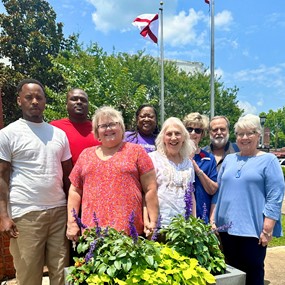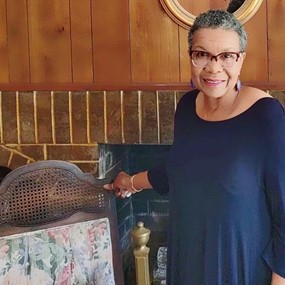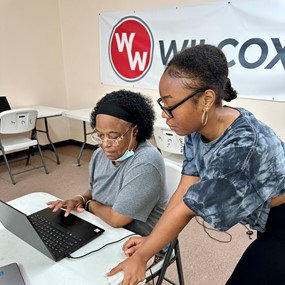Anderson teaches art of soap making
For about 40 years, Betty Anderson, a Camden native, has been making her own soap. She started this while she was living in New York City, because her skin was sensitive to store bought soap. Initially using her grandmother’s recipe, Anderson originally excluded lye because she figured that’s what she was allergic to.
Eventually, Anderson attended a soapmaking weekend retreat in Vermont, where she learned that she needed to include lye in her soap. Over the years, she perfected her practice in her basement in New York, making batches for herself, family, and friends, though she never sold it.
needed to include lye in her soap. Over the years, she perfected her practice in her basement in New York, making batches for herself, family, and friends, though she never sold it.
When she moved back to Camden, she began selling her “Gee’s Bend Lady” soap at Black Belt Treasures Cultural Arts Center (BBTCAC), in addition to making her own for personal use.
Her BBTCAC class, co-sponsored by the Alabama Folk Life Association, filled up when she offered to share her decades of experience making lye soap. Twelve attendees at Anderson’s first soapmaking class on June 3 attentively made their own personal batches under her guidance. Participants will be able to pick up their soap in three weeks after the soap has been dried out.
Anderson’s soapmaking legacy comes from her grandmother, a resident of Gee’s Bend, who shared the soap she made with her neighbors. “They always use to make soap every year. They’d kill the hog and take the remnants and make lard and then we used that to make a whole washpot full of soap,” Anderson recalled. “There were three families there who would make so much soap and then they’d half it up and take it home.”
soap she made with her neighbors. “They always use to make soap every year. They’d kill the hog and take the remnants and make lard and then we used that to make a whole washpot full of soap,” Anderson recalled. “There were three families there who would make so much soap and then they’d half it up and take it home.”
“My grandmother would make some on her stove. Back then, they did not have to wait three weeks to use the soap because they would cook the lye out of the soap,” Anderson said. “They’d cook it for like seven hours and then put it in the mold. The soap would be ready the next day, but you’d have to sit there and stir for seven hours.”
Though today Anderson uses store bought lye, she explained how her grandmother sourced the lye she used. “They made it from the ashes from a white oak tree. They would take the ashes from that and that’s where we get lye.”
She now suggests using High Test lye, shea butter, coconut oil, olive oil, or vegetable oil in the recipe. She uses essential oils in her soaps for scent. Lye, she cautioned, should be handled with care. When combined with moisture, it can burn, which is why her first class must wait three weeks to pick up their soaps. The moisture must evaporate from the soap.
Anderson said she plans on teaching more classes at Black Belt Treasures and looks forward to teaching more people about the art of soapmaking.
Tags: Camden


